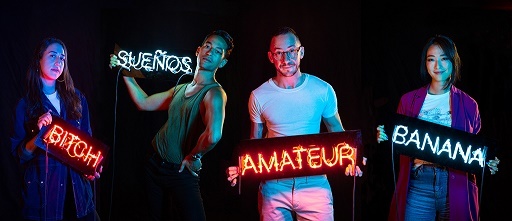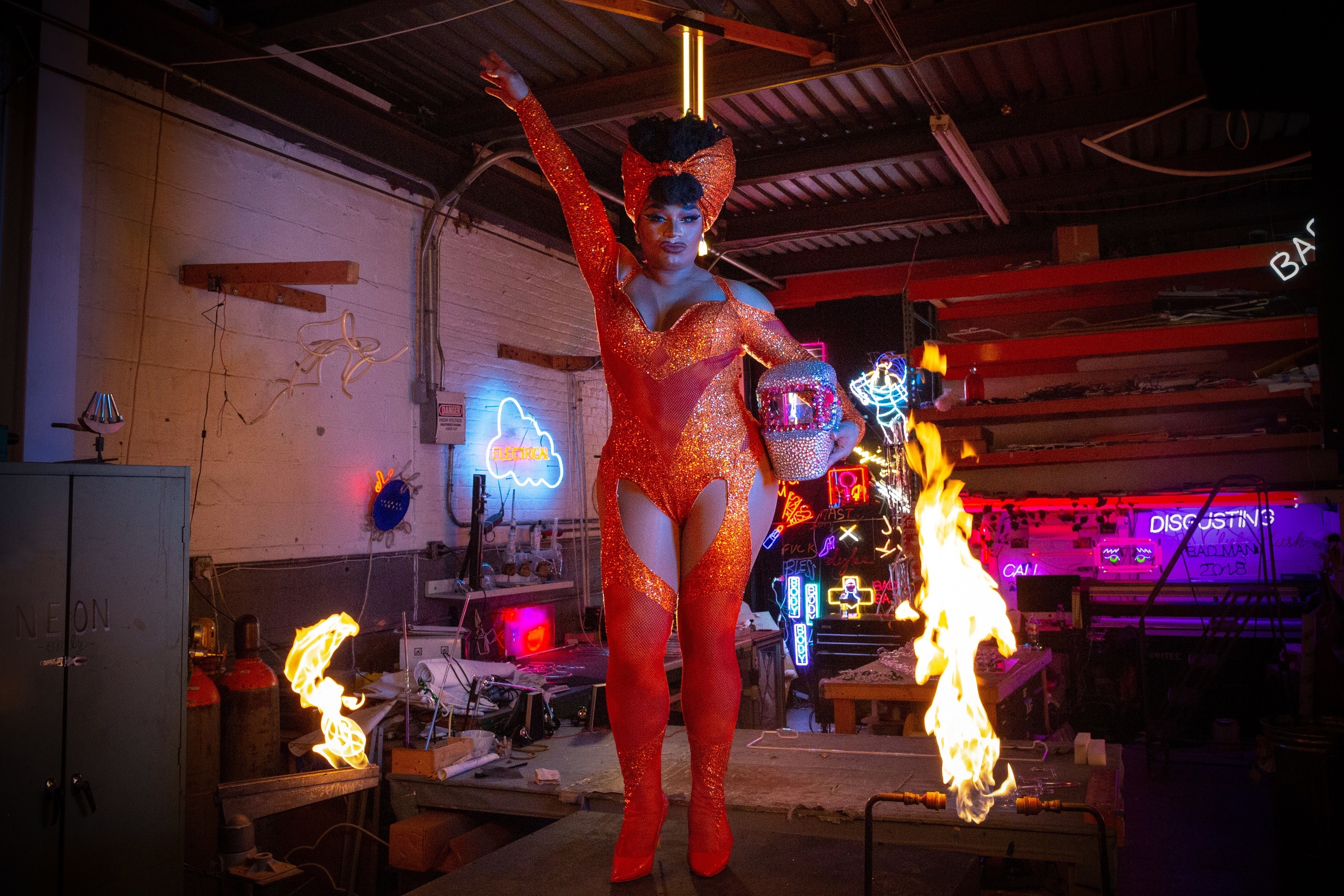Artist Matthew Day Perez, has stepped away from his usual methodical and material-focused work style and is endeavoring in a new project that sits heavily in the world of social politics. Perez and his collaborator, neon artist Kate Hush -- or, as they like to call her, "The Madame of Neon" -- have created a limited-liability company that they adventurously call FagSigns, an unusual moniker that reflects the company's goal to reclaim hurtful language used against the LGBTQ community as well as any other individuals that might feel marginalized. The company's product line are personalized neon signs with a word of the customer's choice that he or she has felt particularly affected by. Through Kickstarter, the artists have nearly raised 90-persent of the funds needed to start a workshop in which to produce the signs and their ultimate goal is to be able to open an apprenticeship that will bring employment opportunity to disadvantaged individuals, particularly from the LGBTQ community, who are interested in working in glass.

The Glass Quarterly Hot Sheet caught up with Perez and Hush at Brooklyn Glass, where they are currently working, to zero in on their ideas:
Glass Quarterly Hot Sheet: On the surface, this project seems to be far off from the past work you have done, which plays mostly with the material of glass itself and the wide range of practices it affords. Has any of your past work been politically and socially conscious or is this the first to take such an approach?
Matthew Day Perez: This is the first time that I have done anything of the sort, although I have been wanting to fuse my passion for glass art with my love of the queer community for a long time. This opportunity, and the apprentice program we hope to start, will allow me to teach an art I love to people that I care about.
Glass: Tell us more about some of the ideas behind this project. What inspired you to do something so wildly different from your usual work?
Matthew: Much of the motivation came from my desire to democratize an otherwise inaccessible medium, an art form relegated for the affluent but one that appeals to everybody and does not have to be so expensive. We would like the relationship between maker and buyer to be as unmitigated as possible, for these pieces to go straight from the studio to the client's wall. The signs we will be making can be bought at an extremely reasonable price. But they are also supporting the LGBTQ+ ecosystem.
Glass: Kate, I know that much of your own work in neon deals with social politics and particularly with issues to do with sexism and what it means to be female. Your neon figures of strong and subversive women seem to actually communicate a similar message to that of FagSigns. Would you say you see all of this work in a similar light?
Kate Hush: Yes, definitely. The world of glass is very much a boys club with a machismo culture and has been difficult terrain for female glass artists to navigate for this reason. My past art in neon challenges and questions this culture by reclaiming assumptions and perceptions of women not unlike how FagSigns reclaiming of language takes the power and hate out of words that are usually considered harmful.
Glass: We mostly associate neon with shop signs, bars, nightclubs and seedy motels. How is neon regarded within the art world these days and in what capacity are you considering its status in your approach to FagSigns?
Kate: I see this project as an opportunity to redirect the space that neon takes up in the art world: having origins in a trash aesthetic and then having been subsequently absorbed by fine art, it has recently become gentrified and therefore commercialized--it pops up often in office lobbies now and, as a result, has lost much of its poise as a fine art medium. FagSigns would allow us change the hierarchy within the glass community as well as the market for neon.

Matthew: Neon is something that so many people love and the reactions that people have when a piece is installed and lit up in their bedroom or living room is like nothing else. This exciting art form should be accessible to everyone and we intend to make a push towards that with FagSigns.
To compliment our conversation with Perez and Hush we took a tour of the studio and connected with neon artist Stephanie Lifshutz for a run-through on how these signs are made. Lifshutz created all the signs featured in the project's campaign so far and is highly skilled in the medium. Tracing a mapped-out drawing of block lettering, she bends tubes of glass under a hot flame, moving from letter to letter, careful not to mistake a transition.
At the age of 14, Perez both came out to his parents as gay and discovered glass. He feels that through FagSigns he is finally combining these two major parts of his identity while simultaneously stimulating social change in the world of glass. If nothing else, the project is bold, thought-provoking and a real demonstration of the wide spectrum of possibilities that glass affords.







